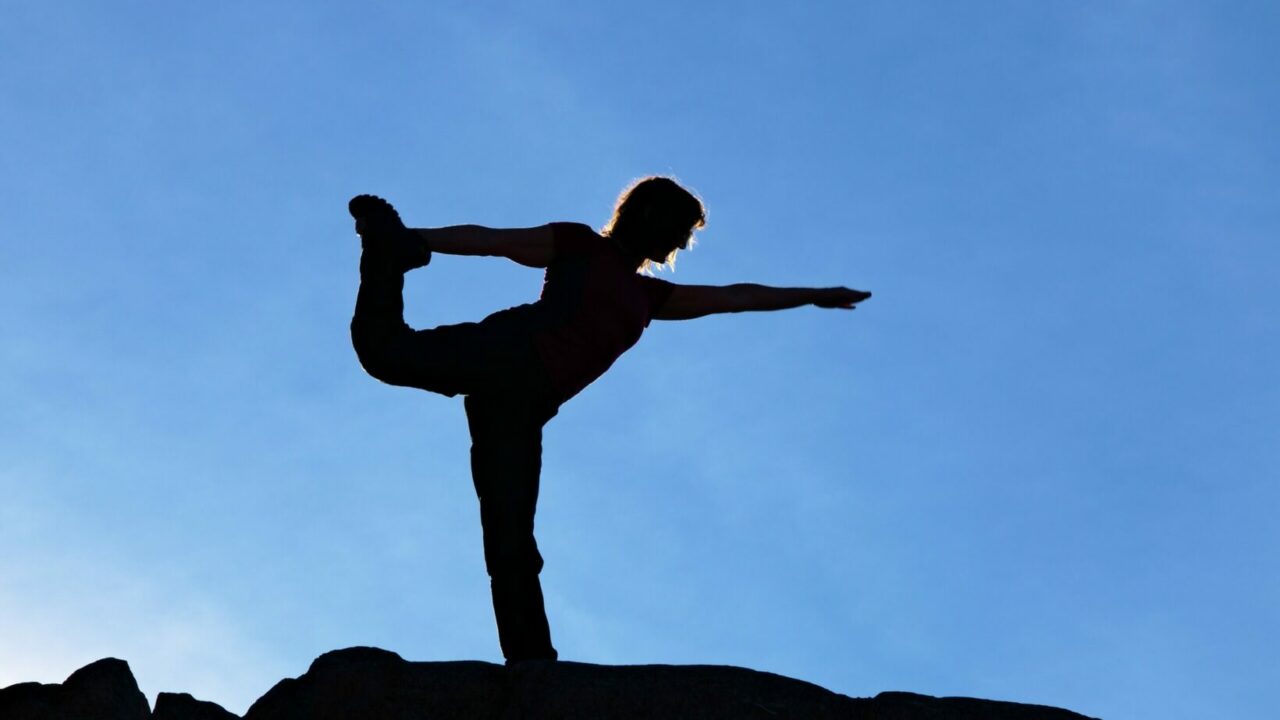Think arthritis is a natural consequence of aging that affects only seniors? Arthritis, the leading cause of disability, affects 1 in 5 adults, most of whom are under 65 years of age. And without proper management, arthritis not only affects mobility, but also overall health and well-being, participation in valued activities, and quality of life. As yet, there is no cure for arthritis, but one important way to manage arthritis is by remaining active. People with arthritis who exercise regularly have less pain and disability and feel better overall. Yet up to 90% of people with arthritis are less active than public health guidelines suggest, perhaps due to arthritis symptoms such as pain and stiffness, but also because they are unsure what they should be doing.
Results from a new randomized trial of people with two common forms of arthritis has found that yoga may soon join the list of activities that are considered safe and effective for people with arthritis. Johns Hopkins researchers report that 8 weeks of yoga classes improved the physical and mental wellbeing of people with two common forms of arthritis – knee osteoarthritis and rheumatoid arthritis. The study is believed to be the largest randomized trial so far to examine the effect of yoga on physical and psychological health and quality of life.
Results were published in the April issue of the Journal of Rheumatology.
Susan J. Bartlett, PhD, associate professor of medicine at McGill University and lead investigator says “There’s a real surge of interest in yoga as a complementary therapy, with 1 in 10 people in the US now practicing yoga to improve their health and fitness. Yoga may be especially well suited to people with arthritis because it combines physical activity with potent stress management and relaxation techniques, and focuses on respecting limitations that can change from day to day.”
The study, which was conducted when Dr. Bartlett was at Johns Hopkins, recruited 75 people with either knee osteoarthritis or rheumatoid arthritis. Participants were randomly assigned to either a wait list or eight weeks of twice-weekly yoga classes, plus a weekly practice session at home. Compared with the control group, those doing yoga reported a 20% improvement in pain, energy, mood and physical function, including their ability to complete physical activities at work and home. Walking speed also improved to a less extent, though there was little difference between the groups in tests of balance and upper body muscle strength. Improvements in everyone who completed yoga were still evidence nine months later.
Clifton O. Bingham III, M.D., associate professor of medicine at Johns Hopkins University School of Medicine and director of the Johns Hopkins Arthritis Center says “In other conditions, yoga improves pain, pain-related disability and mood. But there were no well controlled trial of yoga that could tell us if it was safe and effective for people with arthritis. And many health professionals have concerns about how yoga might affect vulnerable joints given the emphasis on changing positions and on being flexible. Our first step was to ensure that yoga was reasonable and safe option for people with arthritis. Our instructors were experienced yoga therapists with additional training to modify poses to accommodate individual abilities.” says Bingham. Participants were screened by their doctors prior to joining the study, and continued to take their regular arthritis medication during the study.
The researchers have developed a checklist to make it easier for doctors to safely recommend yoga to their patients, Bingham says. People with arthritis who are considering yoga should “talk with their doctors about which specific joints are of concern, and about modifications to poses,” suggests Bingham. “Find a teacher who asks the right questions about limitations and works closely with you as an individual. Start with gentle yoga classes. Practice acceptance of where you are and what your body can do on any given day.”
On the Web:
Journal of Rheumatology paper http://jrheum.org/content/early/2015/03/25/jrheum.141129.abstract?sid=079e624b-c972-43b4-a0b3-45b08895f345

